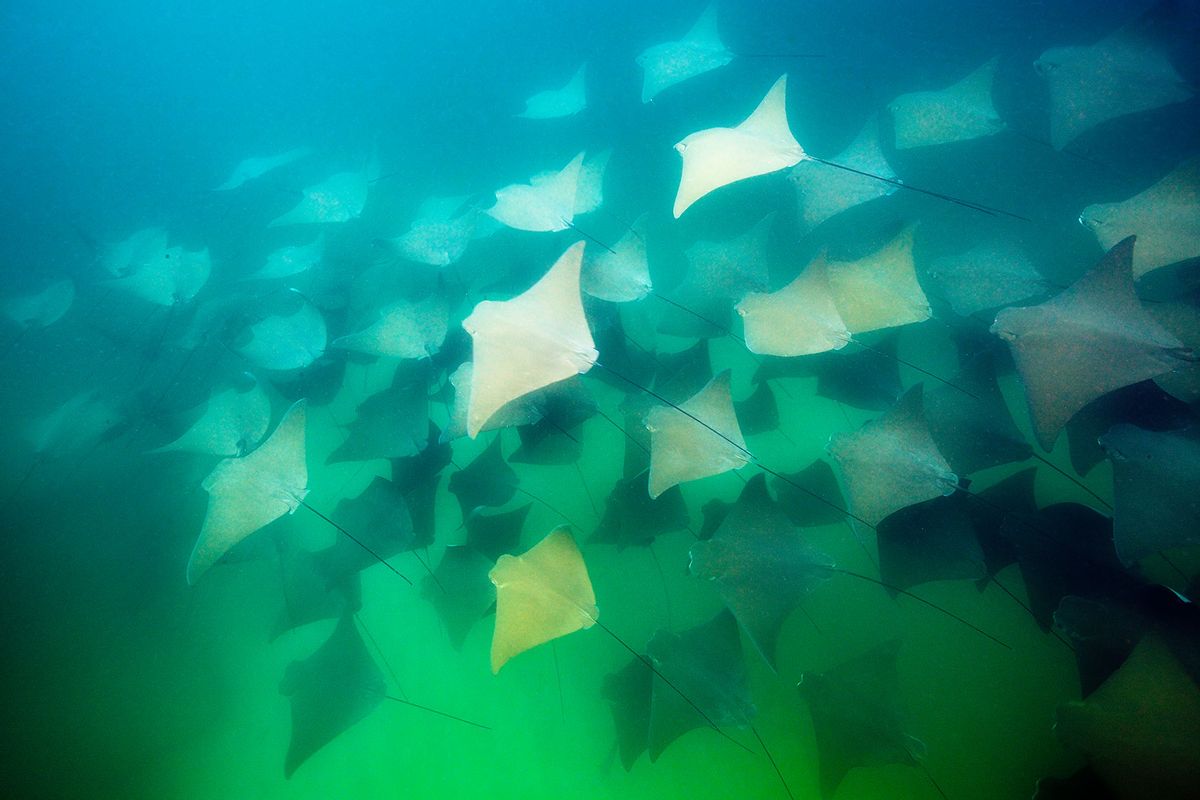Tails aren’t just animal accessories. They usually carry specific functions. But when it comes to rays, their function has been somewhat mysterious until now. Cownose rays (Rhinoptera bonasus) — like manta rays (Mobula birostris), eagle rays (Myliobatis aquila) and other rays in the Myliobatid order — are distinct because of their diamond-shaped bodies and long, whip-like tails. Even though the tails lash back and forth while the rays swim, they are not used for propulsion; similarly, they are not used to kill prey or thwart predators. For centuries scientists have puzzled over the purpose of ray tails, but that mystery was seemingly solved in a recent study in the journal Proceedings of the Royal Society B: Biological Sciences.
It turns out that, like the antennas on an insect or crustacean, a ray uses its tail to sense its environment. The inside of a myliobatid stingray tail is remarkably complex, the scientists learned. It has a caudal synarcual, or a specialized adaptation of the ray’s skeletal near the back, which keeps the tail stiff and thereby minimizes the sound of water as it goes about sensing its surroundings.
“Cownose rays are active swimmers living in a diversity of environments where background noise can be high; for example, noise produced by waves near the surface or during swimming (signals associated with high frequencies),” the authors write. “The filtering capacities of the lateral line system of the tail could improve the signal-to-noise ratio, avoiding overstimulation of the canal neuromasts.”
Yet despite this stiff core, the tail’s tissue is also pockmarked with tiny holes that link to the fish’s lateral line canal, a system of sensory organs that fish and amphibians often use analogous to a human’s central nervous system. In the cownose ray, the lateral line runs the length of the tail and branches off to pores in the fish’s skin, which they likely use to process information about their environment.
By contrast, most aquatic vertebrates have a lateral line that is streamlined near the animal’s tail and only becomes complex near their head. This would help them both bury themselves to avoid predators and sense the location of the bivalves upon which they prey.
“The complex lateral line mechanosensory system in the tail of R. bonasus supports the hypothesis that the tail functions like a hydrodynamic sensory antenna and may play an important role in their behavioural and functional ecology,” the authors conclude.



Shares